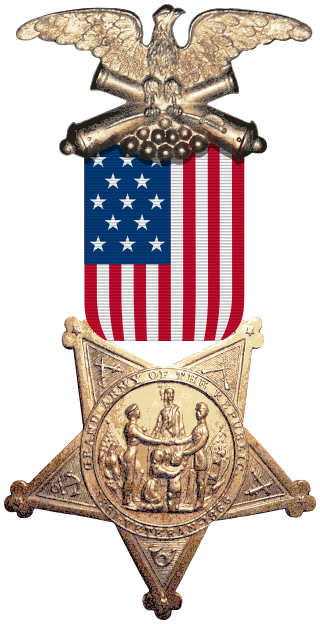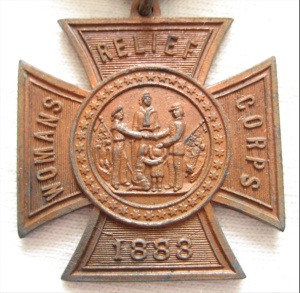 Following the end of the Civil War, as America came back together as one nation, soldiers from both sides settled back into their lives as civilians. The men, who had fought side by side, had watched many of their companions die in battle or from disease, and many of them were recovering from their own wounds. After the war they began to join together for friendship and support.
Following the end of the Civil War, as America came back together as one nation, soldiers from both sides settled back into their lives as civilians. The men, who had fought side by side, had watched many of their companions die in battle or from disease, and many of them were recovering from their own wounds. After the war they began to join together for friendship and support.
One organization that was formed by these former soldiers was the Grand Army of the Republic. Founded on April 6, 1866 by Benjamin F. Stephenson in Decatur, Illinois, membership was open to veterans who had been honorably discharged from the Union Army, Navy, Marine Corps or the Revenue Cutter Service who served between April 12, 1861 and April 9, 1865.
Local Posts, named after deceased members of the military, began to form in the mid-west and soon spread across the United States. Following a ritual similar to that used by Masonic lodges, the members of the Posts met together, held public ceremonies, and accompanied the members of their ranks to the grave with an appropriate ceremony.
Annual Encampments were held with representatives of local posts joining together to elect national officers. Led by the Commander-in-Chief, the organization’s political power grew over time. Five U. S. Presidents, Grant, Hayes, Garfield, Harrison and McKinley, were members of the G. A. R. By the end of the 19th century Republican candidates eagerly sought the endorsement of the posts.
The last G. A. R. Encampment was held in Indianapolis, Indiana in 1949 and the organization ceased to exist in 1952.
 Auxiliary organizations were also formed to assist the G. A. R. members in their work in their communities. These included the Women’s Relief Corps, Ladies of the Grand Army of the Republic, Sons of Union Veterans of the Civil War and Daughters of Union Veterans of the Civil War. Membership was made up the wives, sons and daughters of Civil War veterans, with the exception of the Women’s Relief Corps, founded in 1883, which did not require a hereditary relationship.
Auxiliary organizations were also formed to assist the G. A. R. members in their work in their communities. These included the Women’s Relief Corps, Ladies of the Grand Army of the Republic, Sons of Union Veterans of the Civil War and Daughters of Union Veterans of the Civil War. Membership was made up the wives, sons and daughters of Civil War veterans, with the exception of the Women’s Relief Corps, founded in 1883, which did not require a hereditary relationship.
In May 1881 the second G. A. R. post in Oregon was formed in Oregon City. The post, Meade Post No. 2, named for Civil War General George Gordon Meade (1815-1872), remained active until they surrendered their Charter in December 1930. The few remaining members continued as honorary members of the Waldo Caufield Veterans of Foreign Wars post, which had been established in 1925.
Meade Corps No. 18, Women’s Relief Corps was founded in Oregon City a few years after the G. A. R. post, as the wives, widows and daughters of Meade Post members, and other interested women, joined together to form an auxiliary to support the post.
Members of Meade Post No. 2 included veterans from Union forces from every state in the east and mid-west. These veterans had moved to Oregon following the war or had come to Oregon in the late 1800s, moving west to farm or to open new businesses. Many other veterans arrived later in life as they retired and followed their children, who had moved west for new opportunities.
Membership in Meade Post No. 2 also included veterans who had served during the Civil War era in the 1st Oregon Infantry and 1st Oregon Cavalry. Formed to provide defense in Oregon and Washington after the U. S. Army troops were recalled to the east to fight in the war, the companies were made up of the early pioneers who had arrived in the Oregon Territory prior to 1864.
Many of these veterans and their wives are buried at Mountain View Cemetery. As of May 2016, 148 graves of Civil War veterans have been identified at Mountain View. There is also one cenotaph in memory of a young soldier who died of German Measles while serving in the Civil War, raised by his widow who later moved to Oregon City. Only one burial has been found for a veteran of a Confederate unit. The last member of Meade Post buried at Mountain View died in 1937, at age 91.
